ELAR K.2
Developing and sustaining foundational language skills: listening, speaking, reading, writing, and thinking--beginning reading and writing. The student develops word structure knowledge through phonological awareness, print concepts, phonics, and morphology to communicate, decode, and spell. The student is expected to:
- (1) demonstrate phonological awareness by:
- (A) identifying and producing rhyming words;
- (i) recognizing spoken alliteration or groups of words that begin with the same spoken onset or initial sound;
- (ii) identifying the individual words in a spoken sentence;
- (iii) identifying syllables in spoken words;
- (iv) manipulating syllables within a multisyllabic word; and
- (v) blending syllables to form multisyllabic words;
- (vi) segmenting multisyllabic words into syllables;
- (vii) blending spoken onsets and rimes to form simple words;
- (viii) blending spoken phonemes to form one-syllable words;
- (ix) segmenting spoken one-syllable words into individual phonemes;
- (x) demonstrate and apply phonetic knowledge by:
- (B) identifying and matching the common sounds that letters
represent;
- (i) using letter-sound relationships to decode, including VC, CVC, CCVC, and CVCC words;
- (ii) recognizing that new words are created when letters are changed, added, or deleted such as it - pit - tip - tap; and
- (iii) identifying and reading at least 25 high-frequency words from a research-based list;
- (iv) demonstrate and apply spelling knowledge by:
- (C) spelling words with VC, CVC, and CCVC;
- (i) spelling words using sound-spelling patterns; and
- (ii) spelling high-frequency words from a research-based list;
- (iii) demonstrate print awareness by:
- (D) identifying the front cover, back cover, and title page
of a book;
- (i) holding a book right side up, turning pages correctly, and knowing that reading moves from top to bottom and left to right with return sweep;
- (ii) recognizing that sentences are comprised of words separated by spaces and recognizing word boundaries;
- (iii) recognizing the difference between a letter and a printed word; and
- (iv) identifying all uppercase and lowercase letters; and
- (v) develop handwriting by accurately forming all uppercase and lowercase letters using appropriate directionality.
- (A) identifying and producing rhyming words;
- Plus Plan

I Can Write My Name! Mini Book
Get your students to practice how to write their names with this fun-sized mini book perfect for early years students.
- Plus Plan
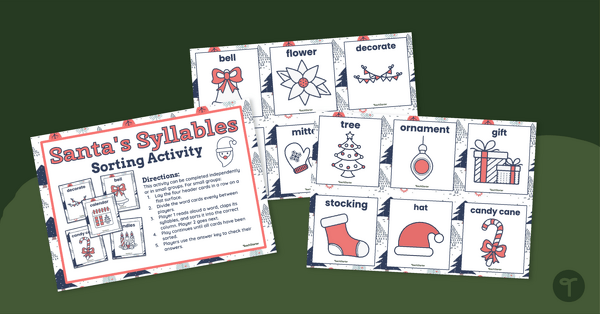
Santa's Syllable Sort - Christmas Reading Center
Help students practice breaking words into syllables with a Christmas literacy center.
- Plus Plan
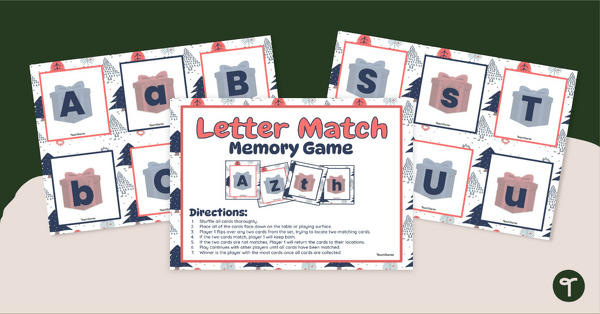
Christmas Game for Kindergarten - Upper and Lowercase Letter Memory
Build letter recognition skills and add Christmas spirit to your literacy centers with a Printable Letter Matching Christmas Game for Kindergarten.
- Plus Plan
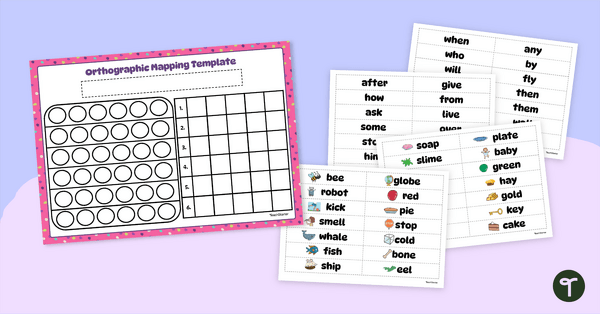
Orthographic Mapping Template and Word Cards
Practice mapping out words using an orthographic mapping template and word cards
- Plus Plan
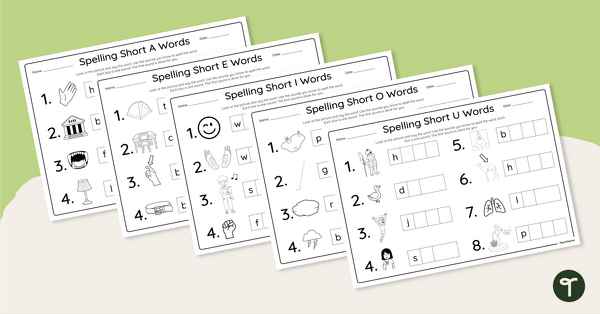
Spelling CVCC Words - Worksheets
Develop students’ ability to segment and blend the sounds in CVCC words with this set of differentiated worksheets.
- Free Plan
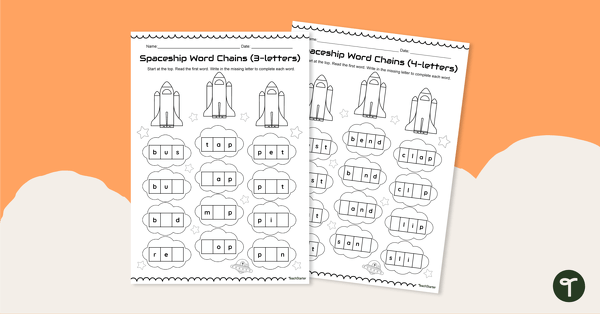
Spaceship Word Chains - Worksheets
Manipulate the individual phonemes in 3- and 4-letter words to create new ones with this set of word chain worksheets.
- Plus Plan
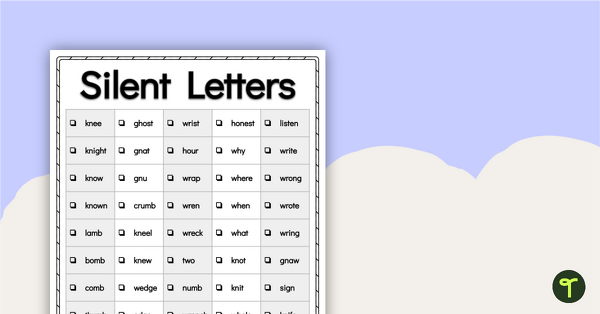
Word Study List - Silent Letters
Introduce and explore words containing silent letters with this extensive list of words.
- Plus Plan
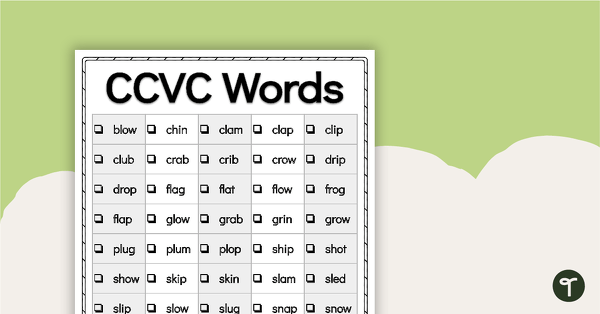
Word Study List - CCVC Words
Introduce and explore words containing the consonant-consonant-vowel-consonant pattern with this printable list of CCVC words.
- Plus Plan
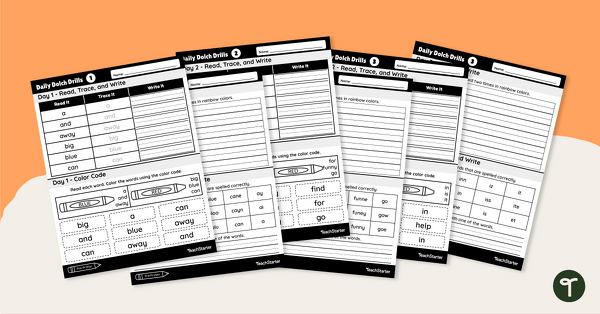
Daily Dolch Drills — Pre-Primer Weekly Homework
Practice weekly sight words to strengthen letter-sound recognition, spelling, and reading fluency with six weeks of sight word homework worksheets.
- Plus Plan
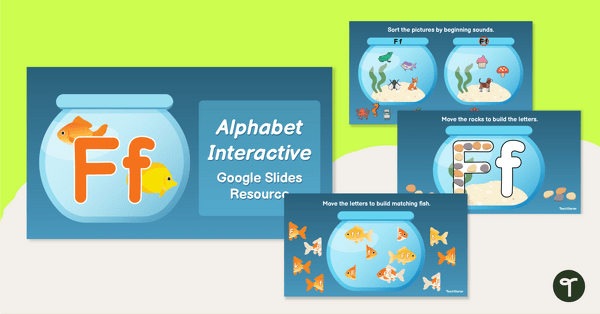
Alphabet Google Interactive - Letter F
Use a Google Slides Interactive Activity to aid students in learning the letter F.
- Plus Plan
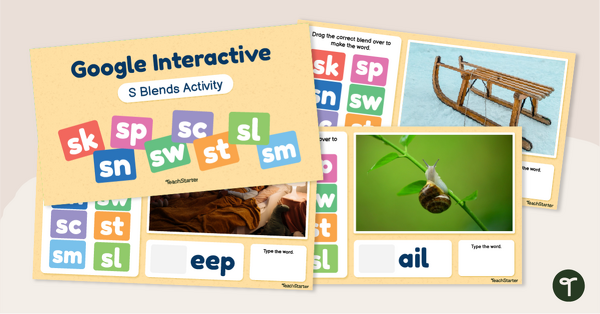
Google Interactive S-Blends Activity
Help your readers practice their S-blend skills with fun, interactive Google Slides word-building activities.
- Plus Plan
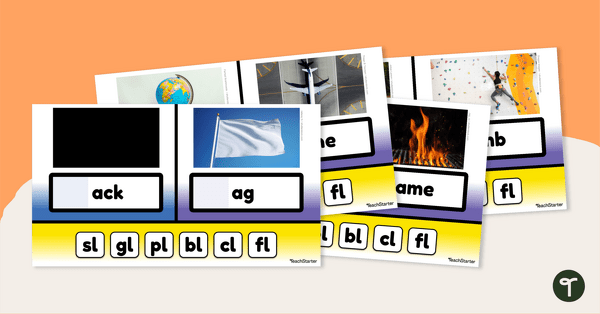
Google Interactive L-Blends Word Building Activity
Engage young readers to tackle L-blend words with an engaging and inviting Google Interactive activity.
- Plus Plan

Google Slides Interactive- CCVC Word Building Activity
Practice identifying consonants, vowels, blends, and digraphs sounds while spelling 22 CCVC (consonant-consonant-vowel-consonant) words.
- Plus Plan

Sight Word Dominoes - Dolch 1st Grade
Improve identifying high-frequency words by sight with this set of 40 Dolch First Grade sight word dominoes.
- Free Plan
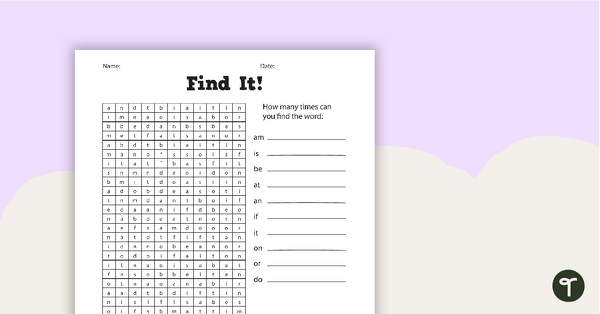
Find It! - Sight Word Worksheets
Make your sight word instruction fun with this word search puzzle.
- Plus Plan
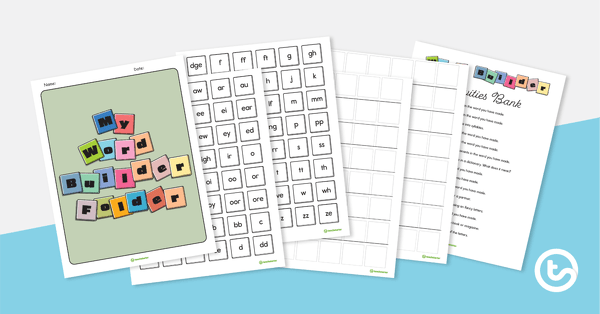
My Word Builder Folder
A word building folder to develop students’ phonemic awareness.
- Plus Plan
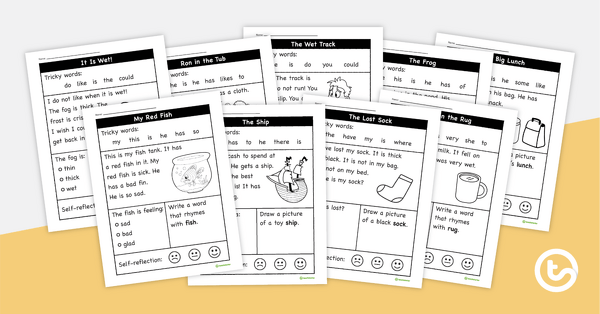
Decodable Text Worksheets – Set 2
A set of 10 decodable text worksheets for early readers.
- Free Plan
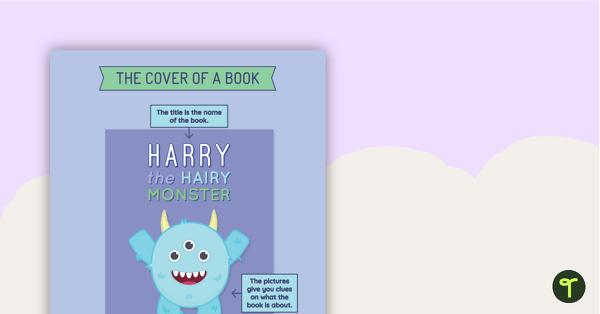
Parts of a Book Front Cover (Classroom Poster)
Highlight the main features of a book's front cover with this printable poster for the classroom or school library.
- Plus Plan
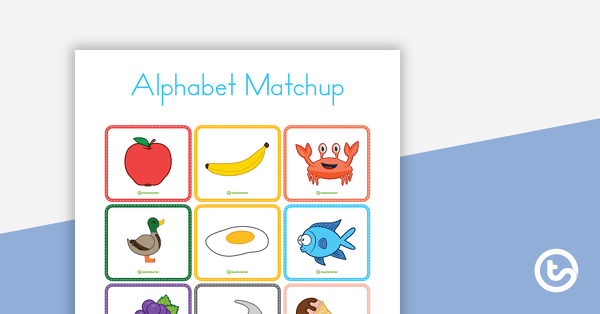
Alphabet Matching Activity
A great matching activity for students to practice their letters and initial sounds.
- Plus Plan
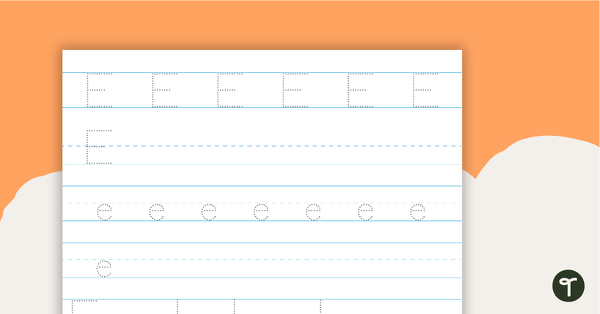
Handwriting Sheets - Uppercase, Lowercase, and Sentence Writing
A set of 26 handwriting sheets that include uppercase and lowercase letters as well as sentence writing.
- Plus Plan
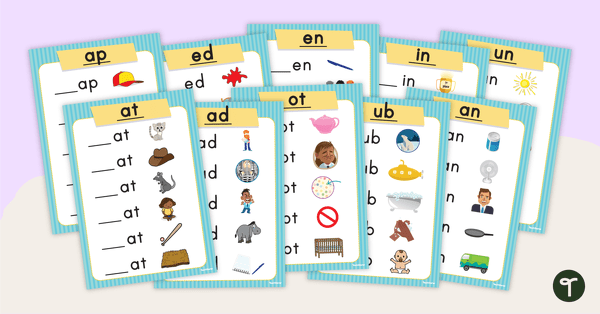
Word Family Activity Sheets
A set of 20 word family activity sheets for students to complete.
- Plus Plan
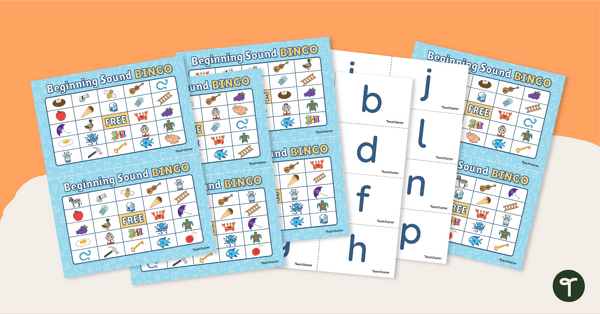
Letter Sound Bingo
Practice applying letter-sound correspondence with a set of 20 BINGO game boards and cards.
- Plus Plan
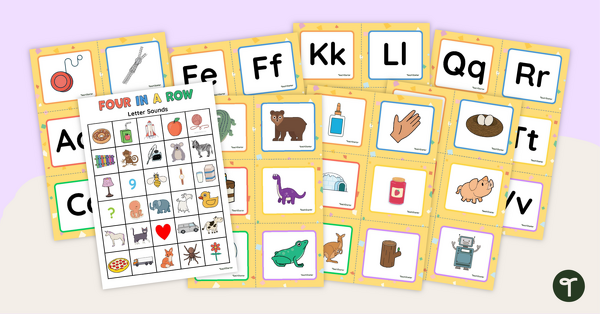
Letter Sounds Games - Four in a Row
Practice applying letter-sound correspondence with 26 picture cards, 26 letter cards, and a beginning letter sounds picture game board.
- Plus Plan
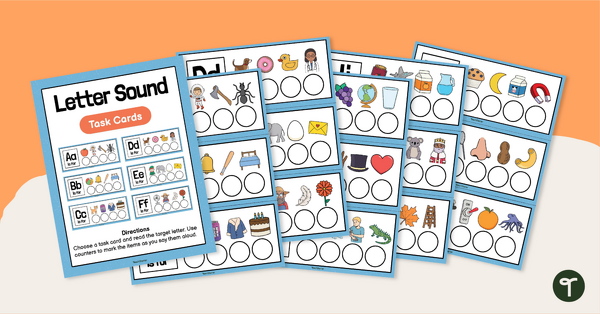
Letter Sound Recognition Activity Task Cards
Explore letter sound recognition knowledge with your students using this set of letter sound activity cards.
- Plus Plan

Beginning Letter Sounds Flashcards Game
Practice applying beginning letter sound correspondence with this set of 16 game boards and letter cards.
- Plus Plan
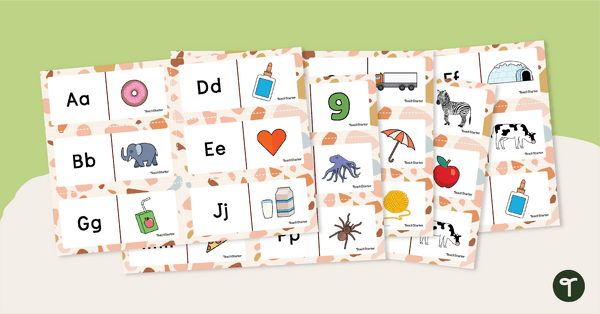
Beginning Sounds Match Dominoes
Explore letter-sound correspondence and beginning word sounds with this set of 52 letter and picture dominoes.
- Plus Plan
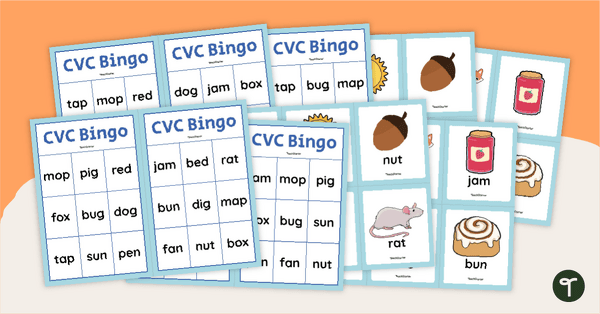
CVC Words Bingo Game
Practice decoding simple CVC words with this set of printable Bingo boards.
- Plus Plan
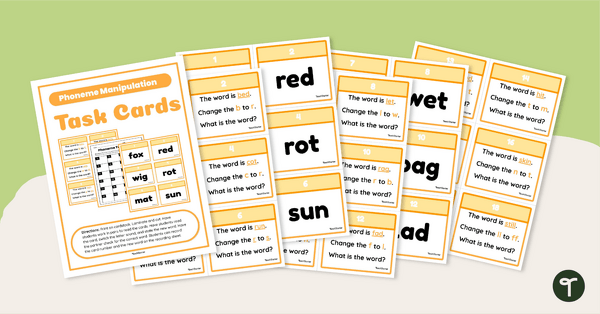
Phoneme Substitution Task Cards
Explore phoneme substitution with your students by using these task cards to replace individual sounds in words to make new words.
- Plus Plan
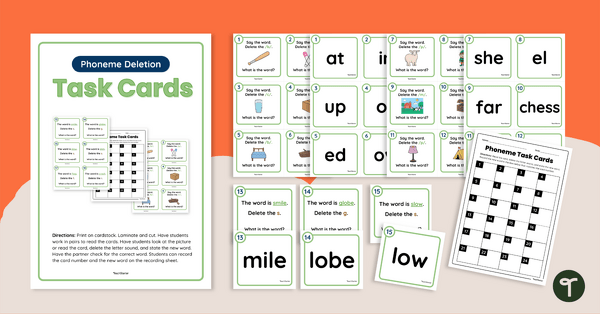
Phoneme Deletion Activity Task Cards
Explore phoneme deletion with this set phoneme deletion activity task cards.
- Plus Plan
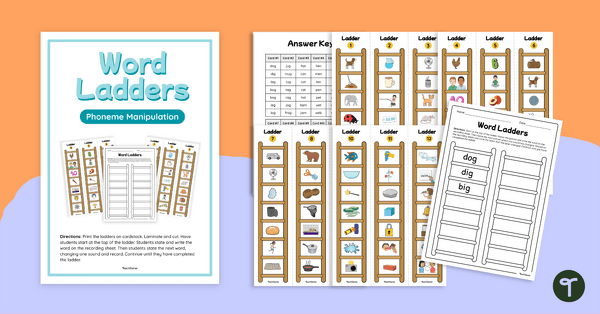
Sound Manipulation Word Ladder Activity
Develop your students' phonological awareness with this phoneme substitution word ladder activity.
- Plus Plan
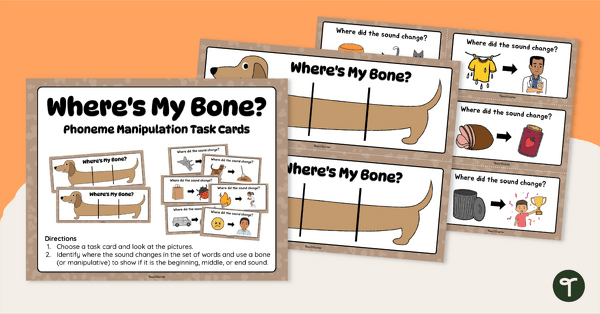
Phoneme Manipulation Task Cards - Where’s My Bone?
Use this phoneme manipulation activity to engage students in listening and manipulating sounds in simple CVC words.
- Plus Plan
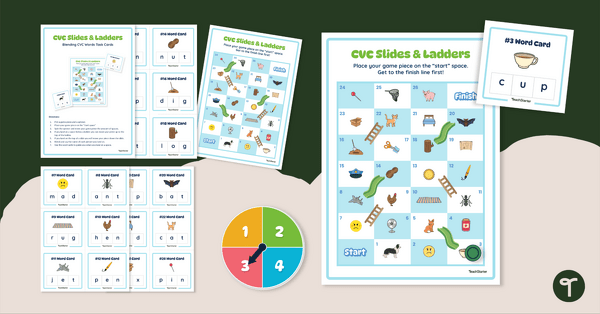
Blending Words Slides and Ladders Game
Play slides and ladders with your students and get them practicing blending CVC words with this fun and engaging game board.